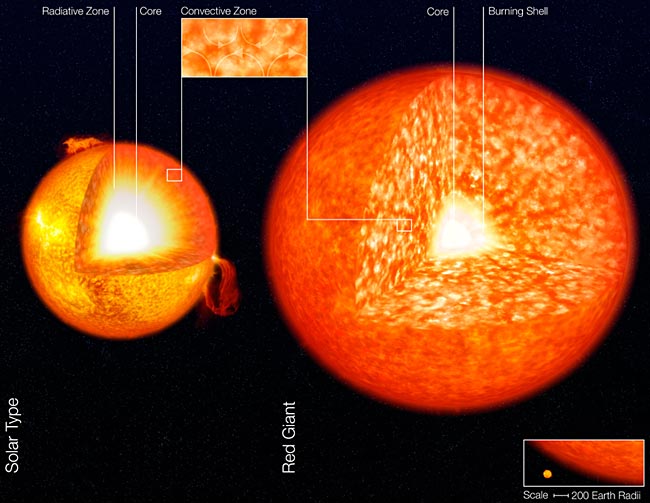Planets Go 'Splat' on Stars

Debrisspots found on stars reveal planets that went splat like bugs on a windshield.
The result: metal smears on the surface of parent stars, said European Southern Observatory astronomer Luca Pasquini, who offered up another analogy:
"It isa little bit like a tiramisu or a cappuccino," Pasquini said. "Thereis cocoa powder only on the top."
The findingcould help unravel mysteries of planetformation.
Asscientists began discovering exoplanets, or worlds orbiting distant stars, inthe past decade, they found these planets were most often found around starsrich in iron. Stars that host planets are on average nearly twice as rich inmetals than counterparts without worlds.
But arethese stars rich in metals because planetarydebris polluted them? Or do metal-loaded stars naturally spawn worlds? It'sa classic chicken-or-egg problem.
If thesemetals were planetary debris, they would only be found in the outer layers ofstars. On the other hand, if these metals were inherently part of the stars,they would be found to their cores. Unfortunately, the only light thatastronomers can see from stars comes just from their outermost layers, whichmeans there is no direct way to peer into their hearts.
Get the Space.com Newsletter
Breaking space news, the latest updates on rocket launches, skywatching events and more!
Instead,scientists looked at stars whose innards churn far more than our sun does. Theingredients of the interiors of these stars roil to their surfaces forastronomers to analyze.
Specifically,researchers focusedon red giants, stars that?as will the sun in several billion years? havepuffed up and become much larger and cooler after they have exhausted thehydrogen in their cores. Compared with sun-like stars, these giants have muchlarger convective zones, or regions where all the gas is completely mixed. The sun'sconvective zone comprises only 2 percent of the star's mass, but in red giantsthe convective zone is 35 times more massive.
Afterinspecting 14 planet-hosting red giants, Pasquini and his colleagues foundthese were not rich in metals as is typically the case for planet-hosting sun-likestars. The simplest explanation is that metals seen in planet-hosting starsare pollution from planetary debris, findings that will be detailed in thejournal Astronomy & Astrophysics.
The debrismight come from "planets themselves or smallplanetoids," researcher Artie Hatzes, director of the Thuringia StateObservatory in Tautenburg, Germany, told SPACE.com.
Pasquinisaid their results might favor the controversial and relatively new "diskinstability" theory. This concept states that large planets emergefrom clumps of dust and gas whose hearts coalesce into cores that growrelatively quickly.
MITplanetary scientist Sara Seager, who did not participate in this study, noted"the findings are an intriguing piece of the puzzle in trying tounderstand planet formation."
Resolvingthe mysteries concerning how planets form will require a much larger study ofmetal-rich and metal-poor planet-hosting stars, she added.
- Video: Planet Hunter
- Key To Planet Formation Found in Space Lint
- Video: Protoplanet Death
Join our Space Forums to keep talking space on the latest missions, night sky and more! And if you have a news tip, correction or comment, let us know at: community@space.com.

Charles Q. Choi is a contributing writer for Space.com and Live Science. He covers all things human origins and astronomy as well as physics, animals and general science topics. Charles has a Master of Arts degree from the University of Missouri-Columbia, School of Journalism and a Bachelor of Arts degree from the University of South Florida. Charles has visited every continent on Earth, drinking rancid yak butter tea in Lhasa, snorkeling with sea lions in the Galapagos and even climbing an iceberg in Antarctica. Visit him at http://www.sciwriter.us









